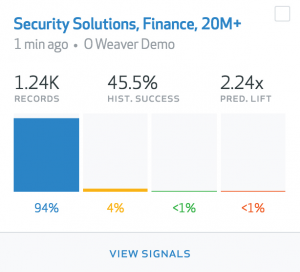Being a little conservative on the commitment at first is better than constantly taking on too much work and not delivering.
Do you remember back to high school when your teacher gave you a big essay to write and it was due at the end of the quarter? If you’re like most of us, you probably didn’t turn it in at the beginning of the quarter when you first learned about it—you waited until a few days before it was due to get started and probably completed it on the due date, not a moment earlier.
It’s human nature to do work when we hear about a deadline. According to Parkinson’s Law, “Work expands so as to fill the time available for its completion.” A lot of economists have studied this and found it to be detrimental to our ability to get work done.
The idea behind the sprint (which comes from the Scrum framework) is to have a short time-boxed cycle for planning and executing work. A sprint helps your team create a sense of urgency and allows them to only plan in detail at the last responsible moment.
An agile marketing sprint is typically one or two weeks and should stay consistent to establish a rhythm, which is known to improve productivity. Sprint Planning is a meeting that kicks off the sprint. It’s really important that this is done well, as it sets the stage for the entire work cycle.
Preparing for sprint planning
Before the Sprint Planning meeting, your team will need a prioritized marketing backlog of work. The highest priority items are at the top of the list and are written in a way that explains what is needed, but not exactly how to do the work. Ideally, the work should be sized with story points to know if the work can be completed in the sprint time box.
Be clear on the sprint goal
One person on the team should have a role that’s responsible for prioritizing the marketing backlog and setting the stage for what customers and stakeholders are needing. In Scrum this role is called a Product Owner. Even if you don’t have this role identified at your company, a marketing strategist, project manager or team lead should be the central person for communicating goals and priorities.
A sprint goal is a summary of what the main focus of work should be on in the coming sprint time box, not a regurgitated list of marketing backlog items. It’s a big picture way to think about what would be considered a success for the team to accomplish in the coming week or two that has value to customers. While the team may work on more than one client or campaign, the fewer and more focused they can be on something specific, the more likely they will be able to complete something valuable, rather than just get a whole bunch of things done.
Some example sprint goals are:
- Validate our assumption that our ad campaign should have 80’s music.
- Promote our upcoming virtual event.
- Create ads for the grand opening of our new store.
Make a team commitment
Agile marketing is all about the team really owning the work, so it’s important that everyone on the team is brought into how much work they can commit to getting done.
The team will start by selecting items from the top of the marketing backlog, talking through them and deciding if that work is feasible to accomplish in the coming sprint. They will continue selecting items to be worked on until they decide they have chosen enough items to do with reasonable certainty they will get done.
The idea in agile marketing is that the team, not the boss, selects the work. This is a really big difference from traditional marketing, but it is a key part of self-organization and having a team that takes ownership of its work.
Once the team has stopped pulling in work items, the fist of five technique can be useful for seeing if everyone is in agreement that the sprint commitment is reasonable. Holding up five fingers means someone is totally in agreement, where one is total disagreement. Talk through it until everyone feels confident in the work selected.
Break down the work
Once the work has been selected, it’s time for the team to figure out how they are going to get the work done. In traditional project management, this is called the work breakdown structure, but in agile, it’s done by the team right before they start the work. Any earlier, and it’s a waste of time.
For example, one of the work items may be a press release. The team will then think of all of the tasks that need to go into writing the press release such as:
- Write the press release
- Edit the press release
- Get approval from legal
- Send to the media
- Measure effectiveness
A lot of agile tools will allow you to take your work item and add these tasks. In agile marketing, work isn’t done until the entire thing is completed, so we would never want to start the press release without getting it all the way through each task.
We want the agile team to be able to help each other out with work to get to the finish line, so avoid assigning work to specific people. It’s helpful to discuss who will be starting which pieces, but make it flexible enough that anyone on the team can jump in and help to get something finished.
If your team has struggled with completing work, taking the extra time to estimate the tasks in hours can be helpful for gauging time commitments.
It’s a natural tendency for teams to overcommit to work, so make sure to leave some room for unexpected urgent needs or a team member getting sick. In agile marketing, we want to strive for predictability so that we can complete work, so being a little conservative on the commitment at first is better than constantly taking on too much and not delivering.
This story first appeared on MarTech Today.
https://martechtoday.com/how-to-effectively-plan-sprints-for-agile-marketing-teams-245175
Opinions expressed in this article are those of the guest author and not necessarily Marketing Land. Staff authors are listed here.
Marketing Land – Internet Marketing News, Strategies & Tips
(23)








